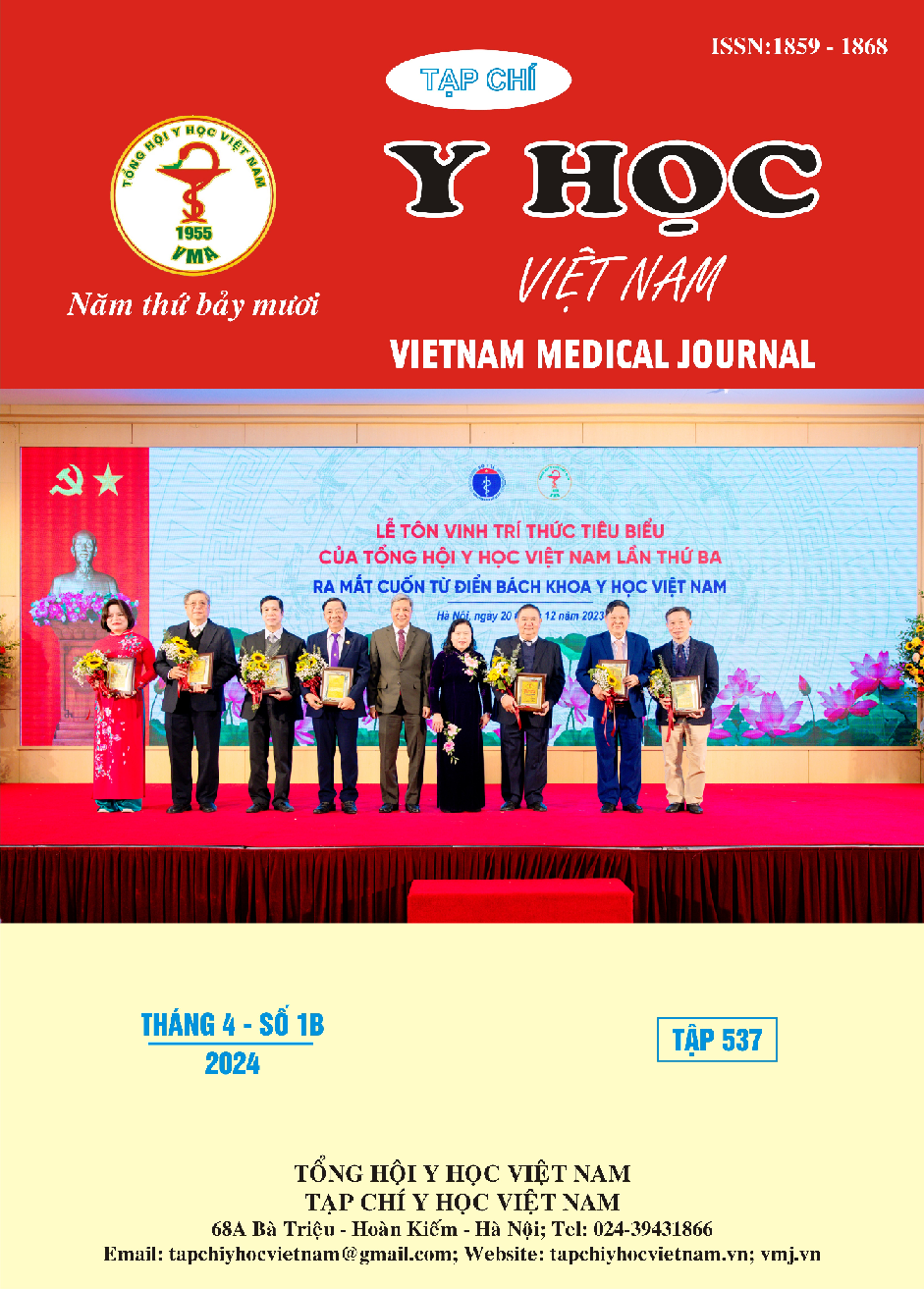EVALUATION OF THE RESULTS OF RHINOPLASTY COMBINED WITH TIP PLASTY USING POLYCAPROLACTONE AND CONCHAL CARTILAGE MATERIAL
Main Article Content
Abstract
Background: Evaluate the surgical results of rhinoplasty combined with tip plasty using Polycaprolactone (PCL) and conchal cartilage material. Methods: The study describes a series of cases on 52 patients who had rhinoplasty surgery using PCL septal extension grafts at Cho Ray and STO Phuong Dong hospital from 5/2022 to 8/2023. Results: The study was conducted on 52 patients undergoing rhinoplasty with a septal extension graft made of PCL material and ear cartilage covered on both sides of the graft for the purpose of shaping the tip. Dosal augmentation with 37 cases using silicon and 15 cases using surgiform. Post-operative follow-up results recorded 1.92% of infections and 3.85% of patients with nasal bridge deviation. Patient satisfaction recorded that 43 (82.69%) patients were very satisfied with the surgical results, 4 (7.69%) patients felt satisfied and 2 (3.85%) patients felt normal and 3 (5.77%) patients felt dissatisfied with the surgical results. Conclusion: Rhinoplasty combined with tip plasty using Polycaprolactone (PCL) and conchal cartilage material brings good results after surgery, besides PCL material is a bioabsorbable material that is safely used for grafts in tip plasty.
Article Details
Keywords
PCL (Polycaprolactone), Tip plasty, Rhinoplasty
References
2. Kim HS, Park SS, Kim MH, Kim MS, Kim SK, Lee KC. Problems associated with alloplastic materials in rhinoplasty. Yonsei Med J. 2014; 55(6):1617-1623.
3. Use of Autologous Costal Cartilage in Asian Rhinoplasty : Plastic and Reconstructive Surgery. Accessed September 18, 2022. https://journals.lww.com/plasreconsurg/Abstract/2012/12000/Use_of_Autologous_Costal_Cartilage_in_Asian.29.aspx
4. Woodruff MA, Hutmacher DW. The return of a forgotten polymer—Polycaprolactone in the 21st century. Prog Polym Sci. 2010;35(10):1217-1256.
5. Park YJ, Cha JH, Bang SI, Kim SY. Clinical Application of Three-Dimensionally Printed Biomaterial Polycaprolactone (PCL) in Augmentation Rhinoplasty. Aesthetic Plast Surg. 2019; 43(2): 437-446. doi:10.1007/s00266-018-1280-1
6. Lee SH, Cho J, Lee JS. Long-Term Outcomes of Secondary Nasal Tip Plasty After Degradation of a Polycaprolactone (PCL) Mesh. Aesthetic Plast Surg. 2022;46(5): 2358-2365. doi: 10.1007/ s00266-022-02839-1
7. Kim JH, Kim GW, Kang WK. Nasal tip plasty using three-dimensional printed polycaprolactone (Smart Ball®). Yeungnam Univ J Med. 2020;37(1):32-39.
8. Moon JW, Choi SY, Kim SJ, Shin JM, Park IH. Wedge resection combined with 3D-printed polycaprolactone mesh for caudal septal deviation. J Otolaryngol - Head Neck Surg. 2023; 52(1):69. doi:10.1186/s40463-023-00677-y


